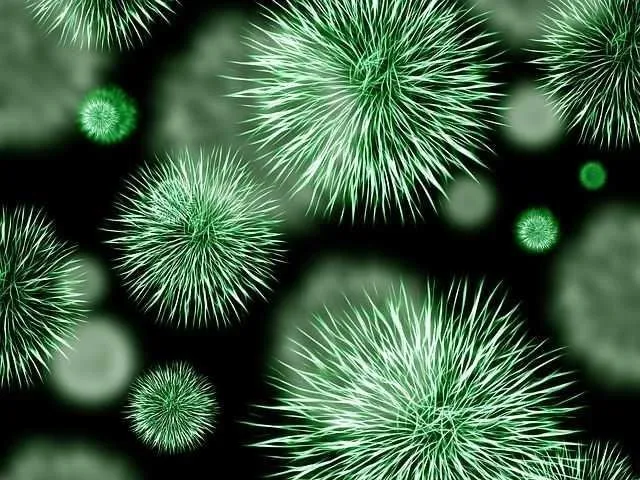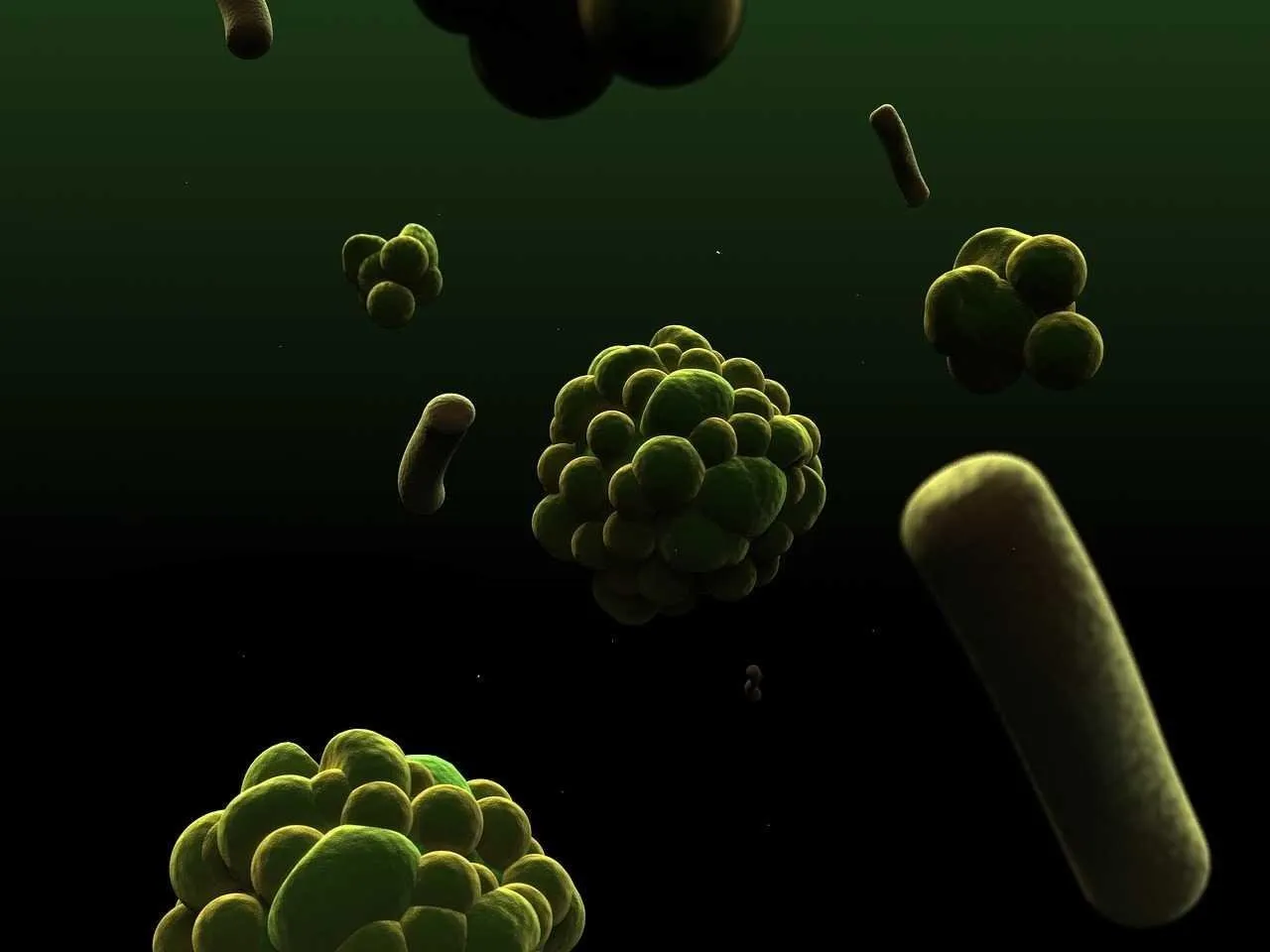What would you give never to fall sick ever again?
If I were to answer this question, my answer would be "I'd give a lot". As hardworking as our immune system is, we still break down sometimes even if it's a slight cold or a mild headache to the serious ones that requires hospitalization for constant monitoring. Personally, I hate the smell and look of hospitals, the boring white walls and the constant smell of drugs and disinfectants.

Is it easier for us to accept that we come down due to the effect of these little guys? We can't even see them, yet they hold so much power over us. I don't want to imagine how much more evil they'd be if they were bigger in size, but then not all of them are mean, some of them are so nice and we wouldn't be here without them.
That said, let's meet our invisible friends and foes.
Our friends are sometimes classified into 7, sometimes into 4 and majorly into 3. I'll be using the 3 classes today. They are;
¶ Bacteria
¶ Fungi
¶ Viruses
When we hear these, what comes to mind is the Viruses must be the most dangerous, not in all cases, I'm sure at the end of the musing, you'll have a change of mind.
BACTERIA

These are bigger than viruses but way smaller than fungi. They are fun to study because they have many different shapes; they can be rods, spheres, or even spirals and they can combine together to form many other fun shapes. These combination of the shapes sometimes lend names to the bacteria as can be seen in the case of Streptococcus species which are chains of spheres (coccus) ranging from two and above, tetrads are formed when four cocci come together, also seen in Staphylococcus species where the cocci combine to form a grape-like shape; these arrangements can be found in rods (bacillus) while the Vibrio species as indicated by their name have a spiral/coma shape. Oh, I almost forgot to tell you, some of these guys are pleomorphic, they assume any shape that suits their need at any point in time, an example is Mycoplasma pneumoniae
Meet some of the good guys;
¶ Bacillus subtilis; useful in food fermentation
¶ Bacillus coagulans; useful in treatment of gastrointestinal disorder.
¶ Bifidobacterium bifidum; useful in countering the effect of Helicobacter pylori which causes stomach ulcer.
¶ Escherichia coli; useful in keeping pathogens away from the intestines, it also produces vitamin K2
I could go on and on about our beneficial little friends but sadly, we feel and see more of their impacts immediately when they do bad. You dare not eat under cooked food or improperly cooled food or even drink impure water, you'd be writing an open invitation to our little antagonists. Yeah, sometimes we go broke or busy and can't help but visit the Mama put (roadside canteens) but how hygienic are they? Are their environments clean? How about the staff of the canteen? What goes down in their kitchen? Let me introduce you briefly to some of these bad guys, they come fully prepared to hack down your immune system.
¶ Salmonellosis caused by the Salmonella species and characterized by fever, abdominal cramps, diarrhea, and sometimes vomiting. As said earlier, you got to watch what you eat to avoid these guys. Ask people who got sick due to Typhoid, they'd tell you how it felt and how they'd do all things possible to avoid it in the future.
¶ Shigellosis caused by the Shigella species, it is characterized by fever, abdominal pain and diarrhea which is sometimes bloody.
¶ Staphylococcus aureus lives happily on your skin, until God help you, it finds a way to enter your system where it becomes an opportunistic pathogen (that's a story for some other time). Is it a sexually transmitted infection? Is it not? My answer is simple, it is transmitted via skin to skin contact. Having boils constantly is a pointer that you have it, but that's the least of your worries, don't wait for it to enter your bloodstream where it causes pneumonia, sepsis, toxic shock syndrome and even meningitis.
Woah...so much to say about our little friends from the Bacteria family but, gotta move on, this isn't only about them, but, they are so popular! The study of bacteria is called bacteriology and people who study them are called bacteriologists.
FUNGI

Would you gladly eat a fungus? Did I just hear you say "heck no!"? Do you love eating mushrooms? In your vegetables soup, on your pizza? Do you eat bread or puff-puff, you know those sweet pastries that we sometimes can't do without? La-la! You gladly eat fungi, oh you didn't know? Mushrooms are fungi but like all good things, we have the evil versions (I'm so scared).
You see, Fungi are fun. We have some that we can see because the are multicellular (mushrooms, toadstools and molds) and the ones we can't see without aiding the eyes. You've never seen one? That black growth you see on your bread that you left on the table after some days is a mold (Rhizopus stolonifer).
Meet some of the good guys;
¶ A lot of the antibiotics we use today are derived from fungi, the first being Penicillin, we also have Streptomycin, Cephalosporin, Griseofulvin, Tetracycline, Amphotericin B, amongst others.
¶ Saccharomyces cerevisiae (aka Bakers yeast) is the real deal for bread making.
¶ Cambert and Roquefort which are moldy cheeses are made using two species of Penicillium.
¶ Shoyu, Miso, Tofu and a host of other Asian fermented foods require fungi.
Meet some of the badass;
¶ Not all mushrooms are edible, some are so poisonous that hallucination occurs by merely touching them. Some intentionally ingest them to get high (what shall we not hear/see?).
¶ Aspergillus, Candida, Blastomyces, Histoplasma species hold the fort in this case. It'll take at least another article to tell you what these guys do.
¶ Fungi also affect plants and animals.
The study of fungi is called mycology while a person that studies fungi is called a mycologist.
VIRUS

This instills the most fear in people. When you have catarrh, you don't feel so worried but when someone comes to tell you that you are infected with Influenza virus, it sends cold shiver down your spine (lol, ain't they the same?). Viruses are the smallest of our little frenemies and perhaps the most powerful.
Viruses are so small that even if you were a bacteria, you'd need help to see a virus.
They can even infect bacteria and fungi, imagine that! When they infect bacteria, they are called bacteriophage, when they infect fungi they are called mycovirus, we'll discuss this at a later time.
As much as we like to attribute all the bad diseases to viruses, they also have a lot of beneficial roles they play. An example is the Vaccinia virus that was originally used to treat Smallpox and from which the word vaccination came from. Remember our viruses that infect bacteria (bacteriophages)? They cause the death of such bacteria thereby ending the bacterial infection.
Viruses are fun as they come in numerous shapes.
The study of viruses is called virology while the person who studies them is called a virologist.
Did you enjoy meeting these little guys? We really can't do without them and I hope you aren't as scared as you were before you read this.
∆ Ref. 1
∆ Ref. 2
∆ Ref. 3
∆ Ref. 4
∆ Ref. 5
∆ Ref. 6
∆ Ref. 7
